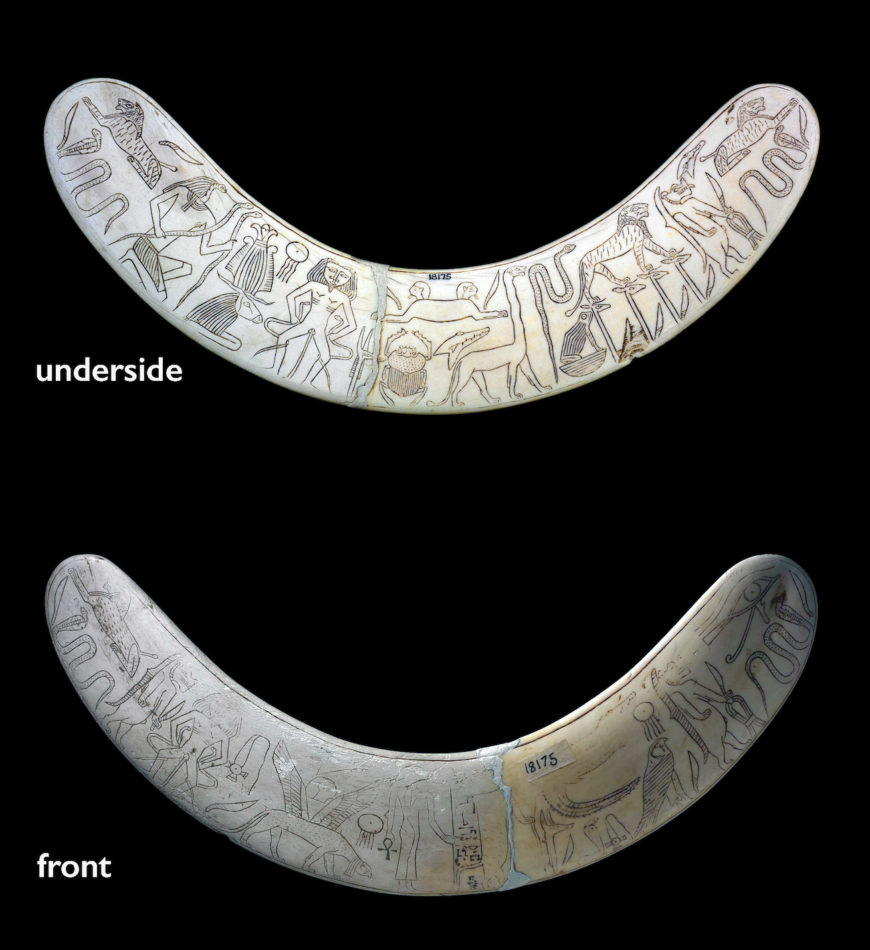
Apotropaic wand, 12th dynasty, hippopotamus ivory, Thebes, Upper Egypt, 37 cm long (© Trustees of the British Museum)
Childbirth and early infancy were felt to be particularly threatening to both mother and baby. Magic played the primary role in countering these threats; various evil spirits needed to be warned off, and deities invoked to protect the vulnerable. These magic knives, also known as apotropaic (that is, acting to ward off evil) wands, were one of the devices used. They are usually made of hippopotamus ivory, thus enlisting the support of that fearsome beast against evil.
The term ‘knife’ is inappropriate, and the shape may be related more to the throwstick (similar to a modern boomerang). Throwsticks were used to hunt birds, and flocks of birds were seen as a symbol of chaos, hence the appropriateness of the shape.
The depictions on this knife encompass a range of protective images. They include a dwarf, probably known as Aha at this date, but later the more famous Bes, and Taweret (a pregnant hippopotamus carrying a knife), both of whom are associated with childbirth. Lions, the scarab of rebirth, serpents, and other fantastic protective demons also feature.
Archaeologists have found that many of these ‘knives’ seem to have been deliberately broken before being placed in the tombs. One explanation is that this was done to destroy some of the object’s powers, which would have been inappropriate in the context of death and burial.
© Trustees of the British Museum

